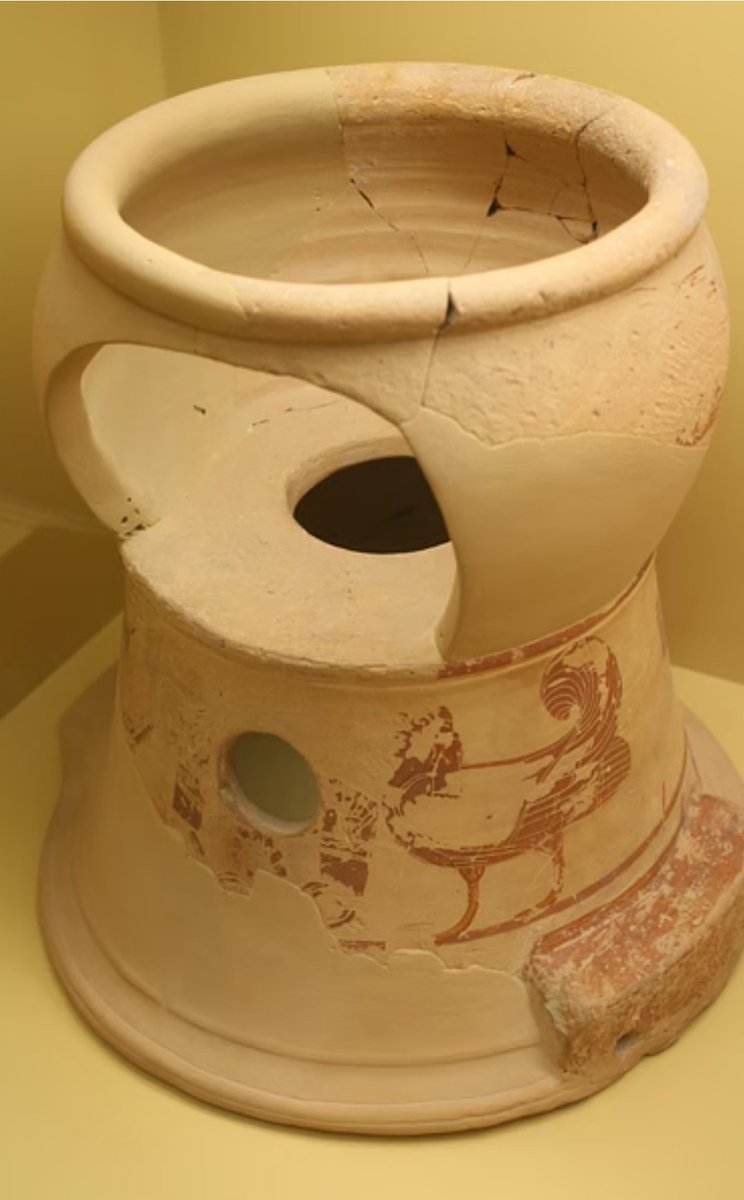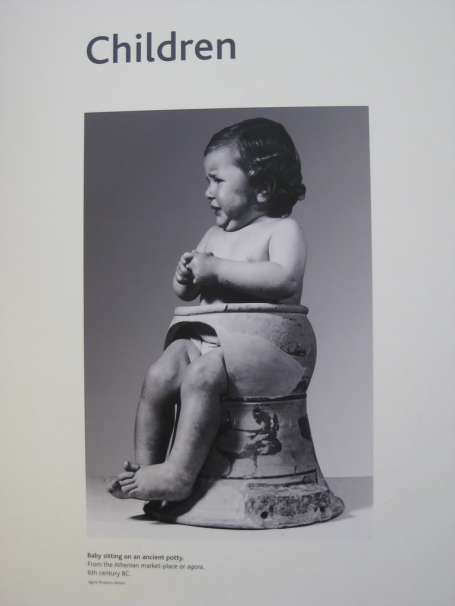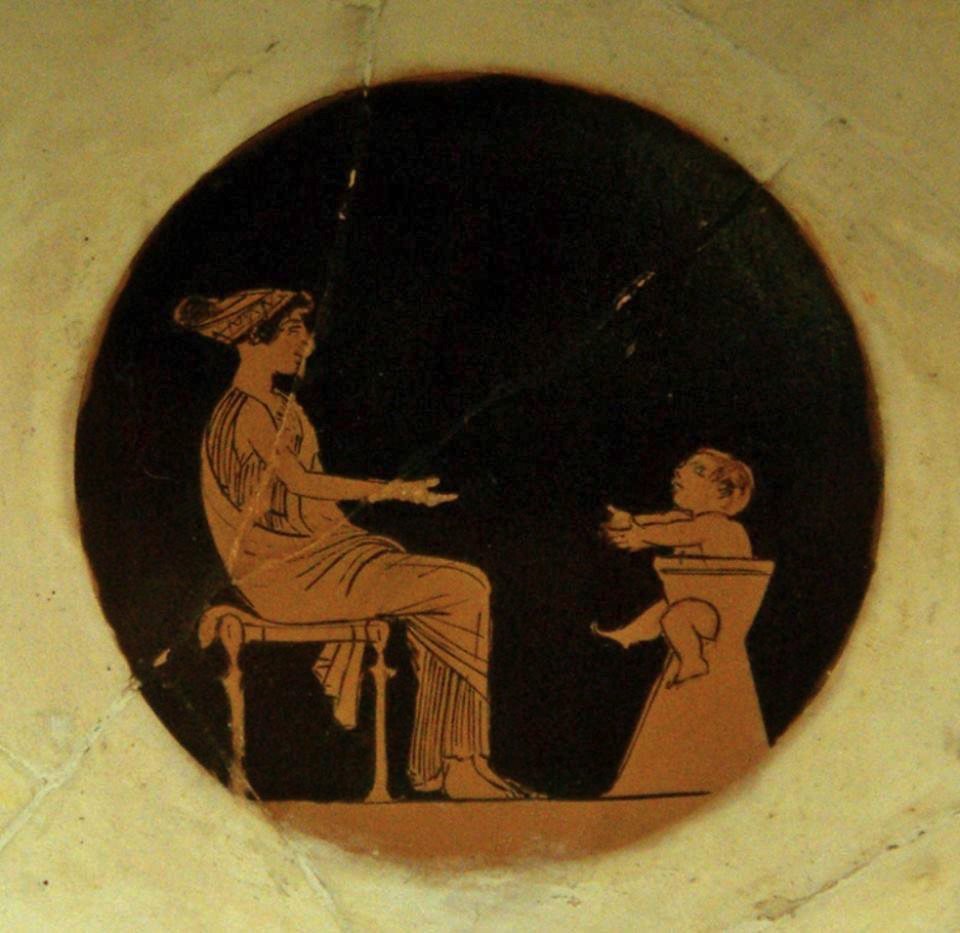An ancient Greek kylix showing a baby sitting in his pottychair and calling to his mother. ca. 480 BCE, the Royal Museums of Art and History, Brussels. And a 6th Century BCE potty found in the Athenian Agora.
It is a measure of how much I’ve changed that I even stop in front of this display when I visit the museum of the Ancient Agora. In the past, I would simply pass by it, concentrating on artefacts pertaining to the military or political aspects of life in ancient Athens.
Yet this artefact has its own charm, as countless of smiling parents and grandparents can testify.
It is of course an ancient potty, the world’s oldest, as far as my research has shown. Since another similar artefact has yet to crop up anywhere else in the world, the archaeologist who excavated it must have been excited, to say the least.

The restoration of the ancient potty was done on the basis of depictions of such potties, found in ancient pottery. It seems that one of the excavation staff lent his or her child to science, to test the artefact. The child looks too small for the potty, a proof, in my opinion, that the potty was destined for children much smaller and less well-fed than the one in the photograph. The baby looks quite distressed too, which may explain why archaeologists haven’t unearthed more similar finds: most ancient potties would have been wooden, since clay is much too cold and hard for tender bottoms.

Despite smiling on seeing this exhibit (and the accompanying photographs), one must not forget the harsh reality of the time it was made and used: infant mortality in Ancient Greece was particularly high – ancient cemeteries are full of children’s burials.






